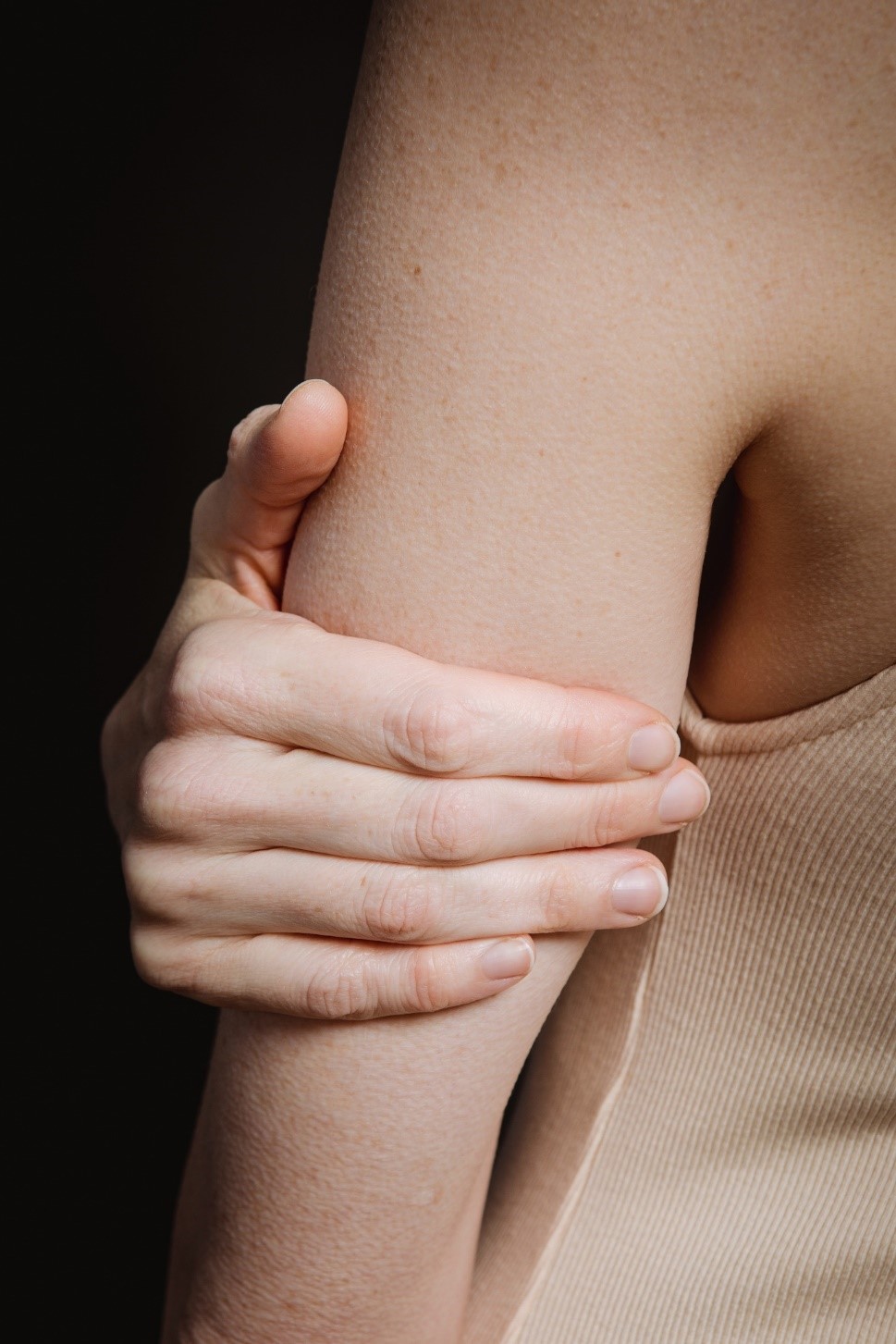
Humeral head fracture rehabilitation
Your humerus connects the shoulder to the elbow joint and proximal humeral fractures make up 4 to 5 percent of all fractures, occurring at the surgical neck of the bone, closest to the shoulder.
Proximal humeral fractures often occur as a result of falling from a standing height, with the likelihood of suffering a humeral fracture increases with advancing age.
How are proximal humerus fractures classified?
There are a number of classification systems used to describe proximal humeral fractures. According to the Gold Standard, Neer classification, the proximal humerus is divided into four sections: the anatomical neck, the surgical neck, the greater tuberosity, and the lesser tuberosity.[1]
Fractures are classified according to whether one or more of these four sections (or fragments) have been displaced. Displacement exists when a segment is angulated more than 45 degrees or displaced more than one centimetre from a normal anatomic position.
- One-part fractures are defined as fractures in which no fragments are displaced
- Two-part fractures are defined by one displaced fragment
- Three-part fractures are defined by two displaced fragments, but the humeral head remains in contact with the glenoid
- Four-part fractures are defined by three or more displaced fragments and dislocation of the articular surface from the glenoid
What is the treatment following a proximal humerus fracture?
A high percentage of proximal humeral fractures are nondisplaced or minimally displaced and can be treated non-operatively by a musculoskeletal or sports specialist physio knowledgeable about fracture management.
Several muscles have insertions on the proximal humerus, and the forces exerted by these muscles during proximal humeral fractures can cause pain and dysfunction[2]:
- The supraspinatus and infraspinatus pull the greater tuberosity superiorly
- The subscapularis pulls the lesser tuberosity medially
- The pectoralis major adducts the humeral shaft
- The deltoid abducts the humeral shaft
Physiotherapy management of one-part fractures
Immediate care after a fracture consists of immobilisation with a standard or collar and cuff sling, ice, and painkillers. Neither splinting nor casting is required. It is suggested that early mobilisation with gentle pendulum exercises be performed in the sling beginning one to two weeks after the injury.
The goal of shoulder rehabilitation is to restore strength and mobility, including abduction, flexion, extension, and rotation. Physiotherapy treatment is strongly advised following immobilisation in a sling or brace to help regain muscle strength and range of movement and get you back to the activities you enjoy.
Prehab and rehab for fractures requiring surgery
Physiotherapy treatment at Lane Cove ensures you get the most out of your surgery so that you regain your range of movement, muscle strength and function in a safe and effective way.
The aim of the surgical treatment of proximal humeral fractures is to maintain bone alignment facilitating an early shoulder mobilisation. Shoulder rehabilitation is important after proximal humeral fractures; however, the optimal timing for the start of rehabilitation will depend on the mechanism and character of your injury.
Loss of shoulder motion and function is more likely to develop in patients who do not perform range of motion exercises during recovery.
Your Lane Cove rehabilitation program for your shoulder fracture might look something like this:
Acute phase (1-4weeks)
- Pain and swelling Management
- Advice and education
- Gentle passive and active range of motion exercises for elbow, wrist and hand
- Postural awareness
- Wound and brace management
4-8 weeks
- Focus on range of motion for shoulder to avoid adhesive capsulitis
- Soft tissue release pectorals and upper quarter, subscapularis
- Inferior glides for glenohumeral joint and acromioclavicular joint
- Scapular setting exercises
- Proprioceptive training (increasing awareness of your arm in space)
3-6 months
- Strengthening as tolerated with maximum achievable active range of motion
- Advanced proprioceptive exercises
- Functional training
- Long term management
Physiotherapy treatment is an essential component of fracture rehabilitation and Lane Cove Physio are the experts in structured treatment programmes that are tailored to your needs. If you have suffered a shoulder fracture or a preparing for shoulder surgery, contact us to ensure the full recovery of movement, strength and functional use of your arm and get you back to optimal health and fitness.
[1] Neer CS 2nd. Displaced proximal humeral fractures. I. Classification and evaluation. J Bone Joint Surg Am 1970; 52:1077.
[2] Roux A, Decroocq L, Batti SE, et al. Epidemiology of proximal humerus fractures managed in a trauma center. Orthop Traumatol Surg Res. 2012;98:715–719.



